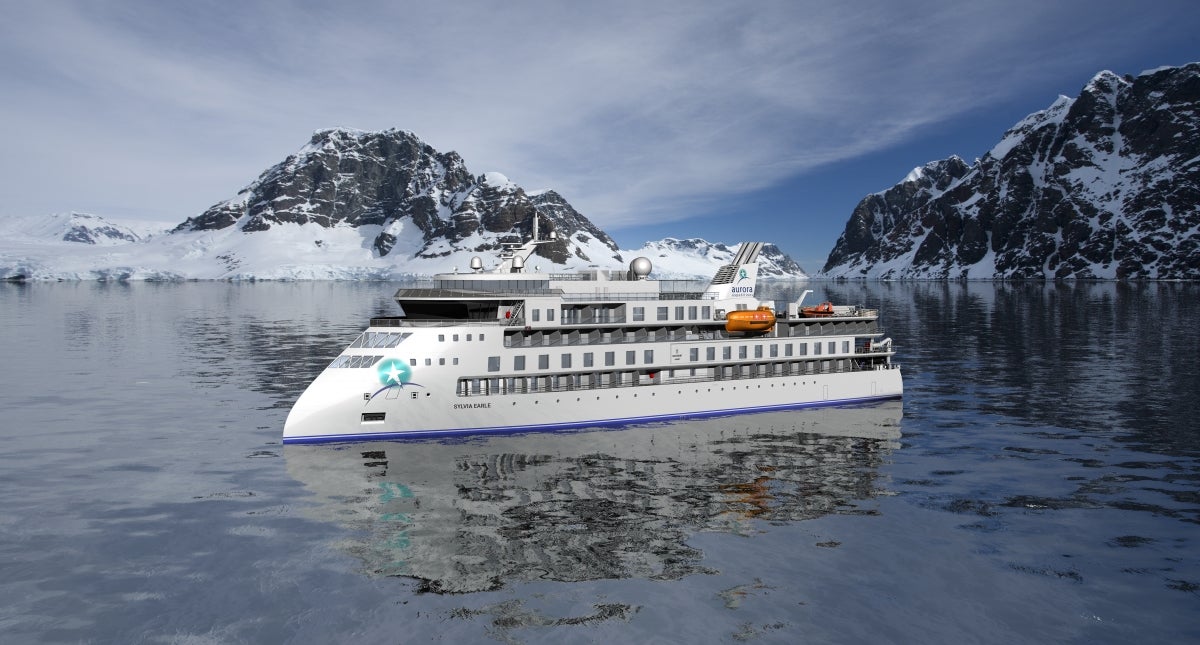
Sailing to Antarctica entails a slew of challenges. In particular, unstable waves are common when cruising through the infamous Drake Passage – the massive body of water situated between the southernmost tip of South America and Antarctica’s Shetland Islands. As a result, nautical engineering companies have been developing technologies and vessel designs to make travel smoother and minimise ‘mal de mer’, or seasickness.
The X-BOW hull design – also dubbed the “inverted bow concept” by creators Ulstein – was trialled in Aurora Expedition’s Greg Mortimer, which was the first passenger cruise ship to use the technology in October 2019 for an expedition to Antarctica.
How does the X-BOW design work?
The hull of an X-BOW vessel is curved backwards with more volume in the ship’s fore, therefore making it particularly suited to adverse conditions in harsh waters.
The bow slices the waves, preventing them from crushing at the hull and allowing the ship to continue its smooth course so travellers feel softer motion and fewer vibrations and disturbances.
When compared to fore ship volumes with more conventional, bulbous bow shapes, the X-BOW has more displacement volume starting from the waterline.
Greg Mortimer’s captain Ulf-Peter Lindstrøm said that sailing in a ship with the X-BOW design was a different experience. “You don’t feel the sea,” he said in a testimonial on Ulstein’s website. “In big seas, I kept waiting for the slamming, but it never came. Other ships can only keep half the speed.”
After the successful 12-day voyage, in January 2020 Aurora Expeditions announced that it will deploy a second X-BOW ship – Sylvia Earle – in October 2021.
However, this wasn’t the first time the X-BOW design has been used in ships. Initially purposed for the commercial market in the offshore oil and gas industry, the X-BOW ship design was launched in 2005. It was later introduced on vessels in other segments such as the offshore renewables industry and has already been used in more than 100 ships since its launch.
X-BOW: Boosting safety, stability and sustainability
The design is built in a way that it allows for more gentle sea crossings, faster transit speeds, as well as lower fuel consumption and air emissions.
The technology is conducive to being environmental-friendly and saves energy “because it uses less fuel to get through the waves,” the company said.
The key advantage of the X-BOW is that it helps pierce through waves and disperses the force to the sides of the boat as opposed to rising on the waves and slamming it down, therefore reducing the rocking motion.
As explained by Ulstein in a statement, the aim of the X-BOW is to enable ships to be more stable during poor weather conditions, as well as allow them to maintain speed in head seas and protect fore-deck areas from green sea and spray. The ship design is also said to cuts costs on equipment maintenance as it reduces wear and tear.
Since its launch, the X-BOW design has been trialled in extremely harsh conditions. For instance, the Polarcus Alima sailed through the Arctic waters north of Russia and the Esvagt Aurora navigated through the Arctic waters of Barents Sea, with both enduring rough seas during their voyages.



